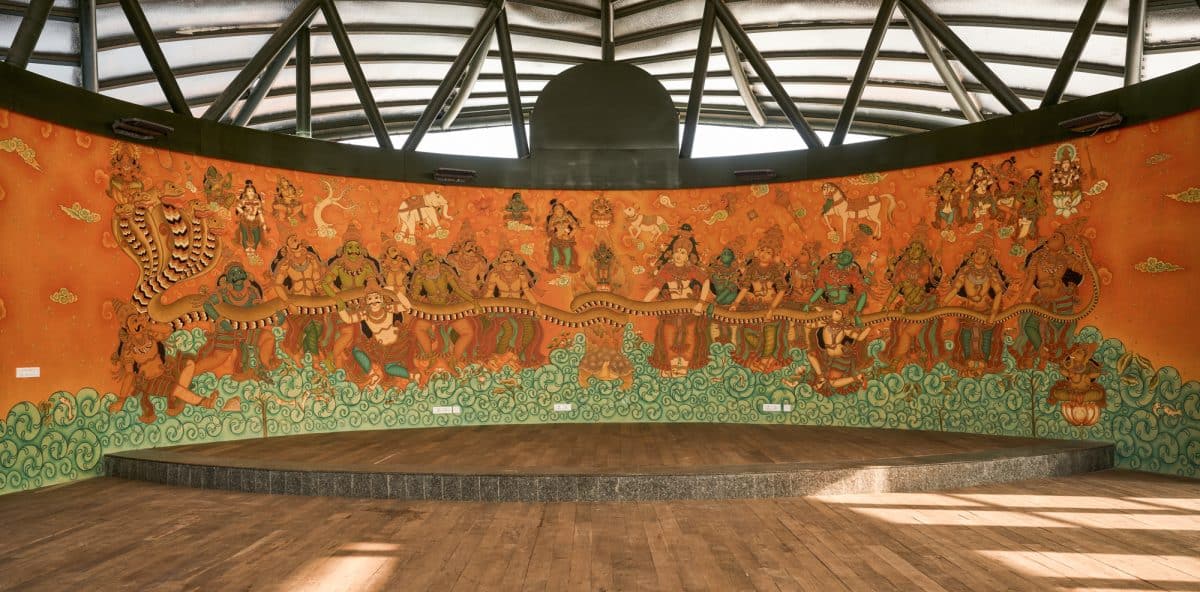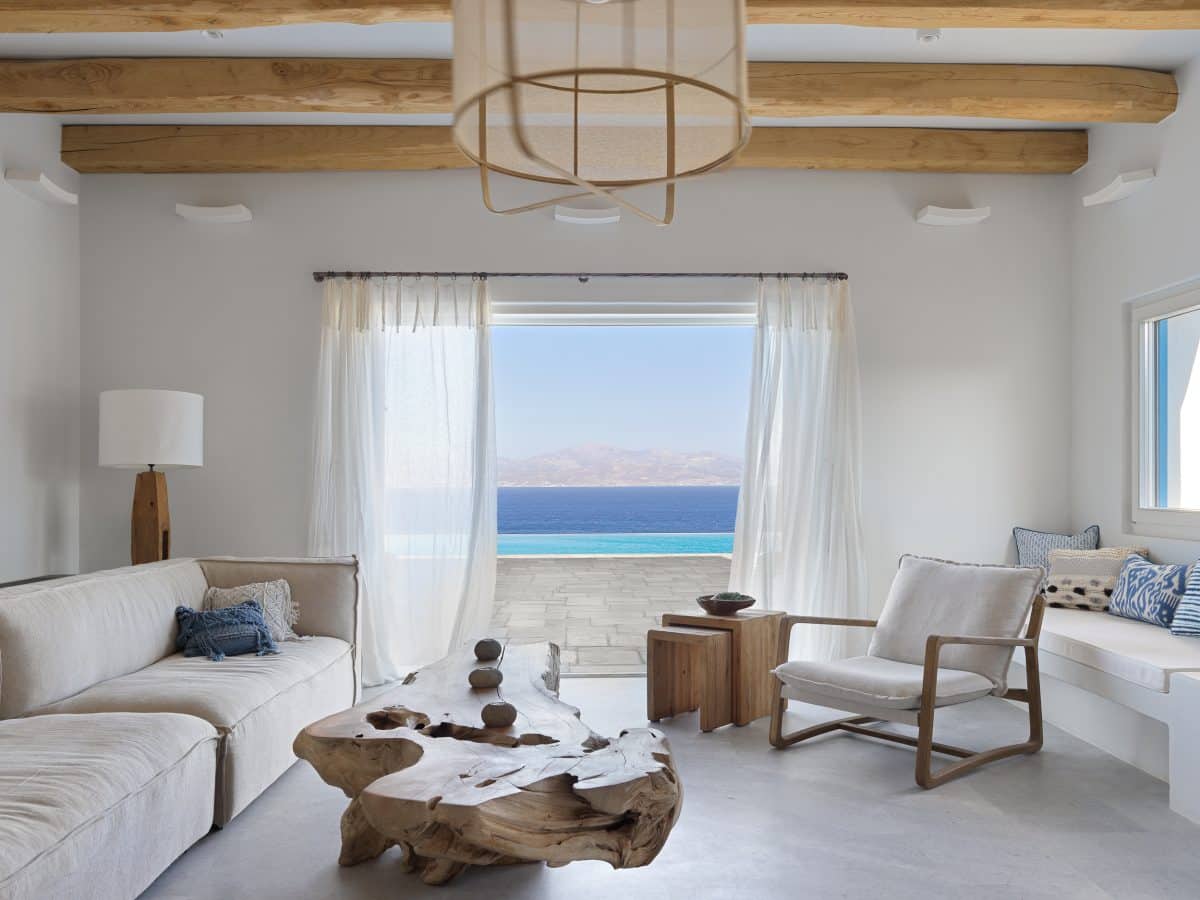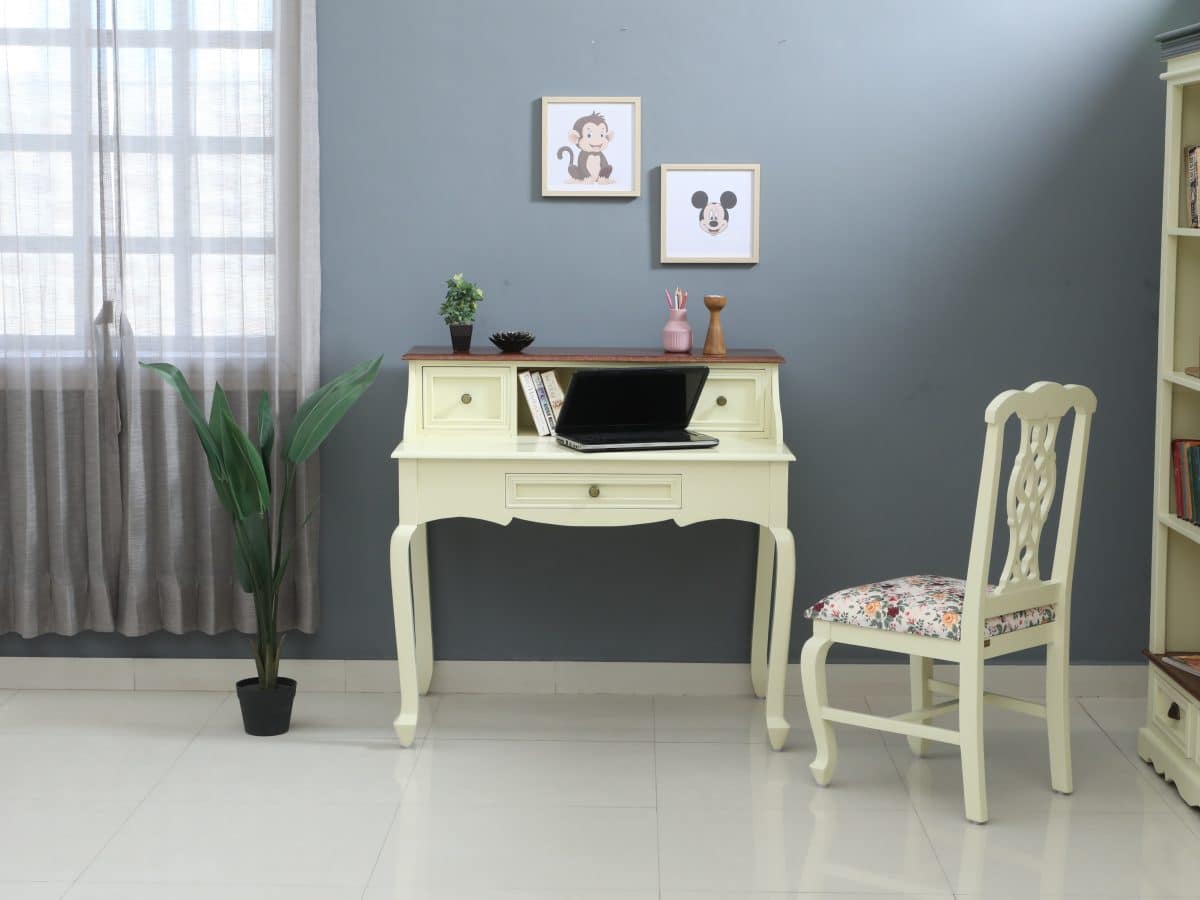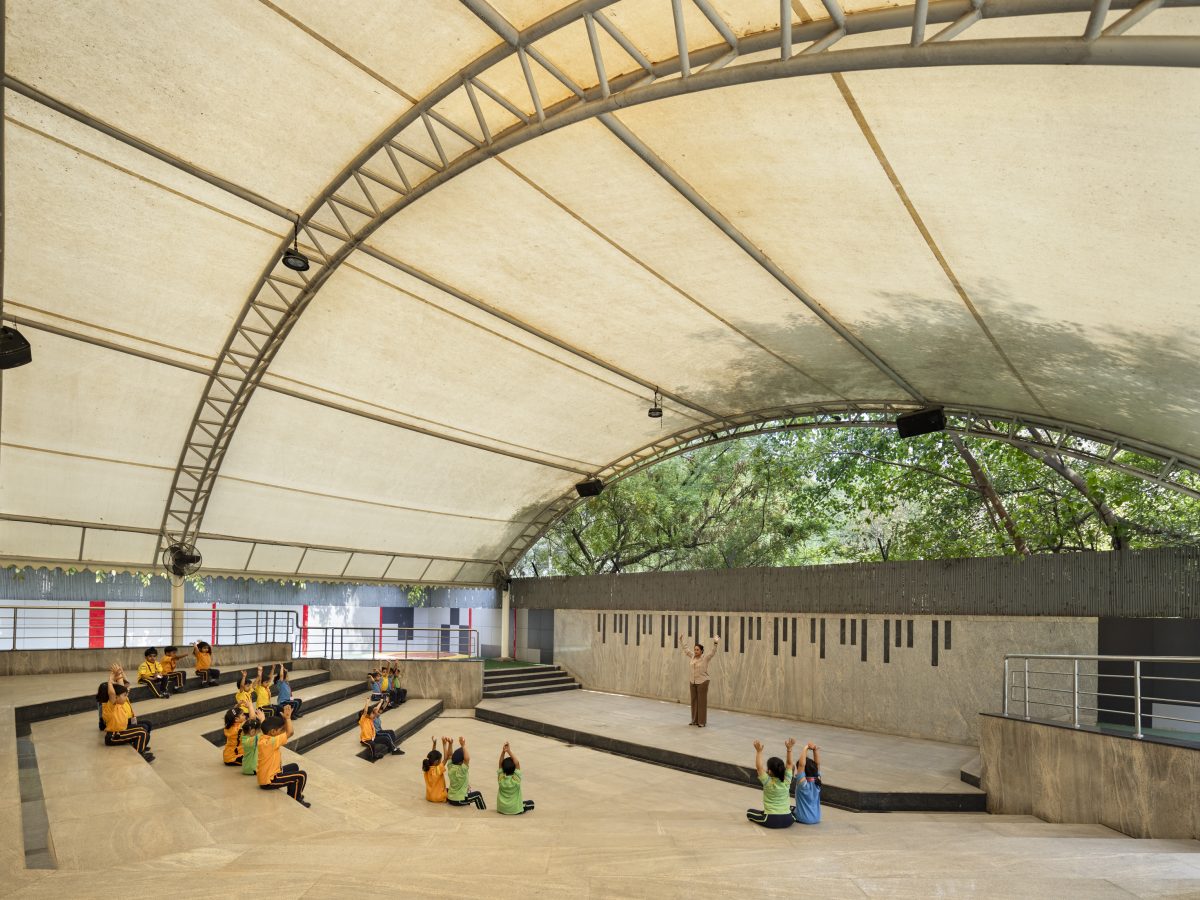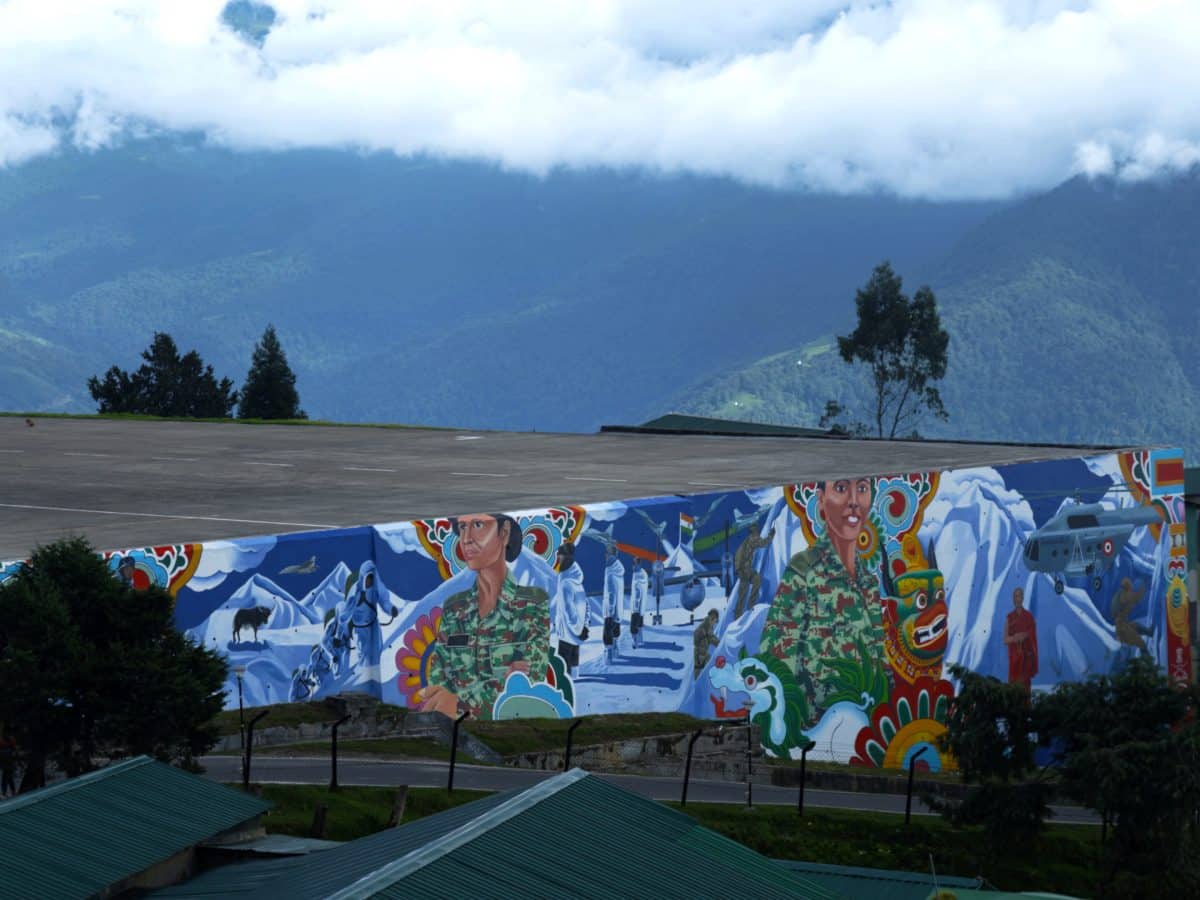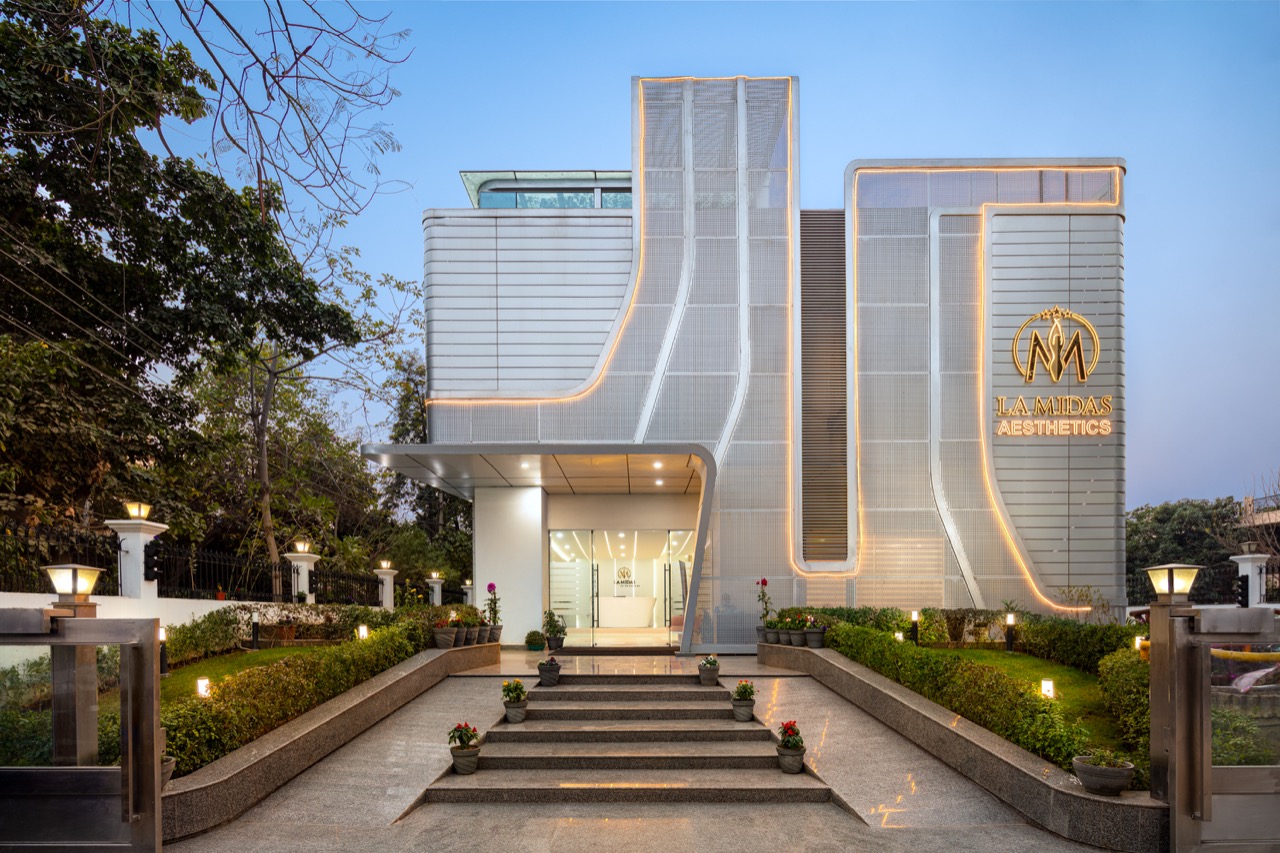Nestled amidst tranquil landscapes, Kshemavana stands as a sanctuary where one can reconnect with mind, body, and soul, embracing a mindful way of life. Beyond its serene exterior lies a treasure trove of design and décor that marries tradition with creativity, inviting visitors into a world where every corner tells a story of craftsmanship and cultural heritage.
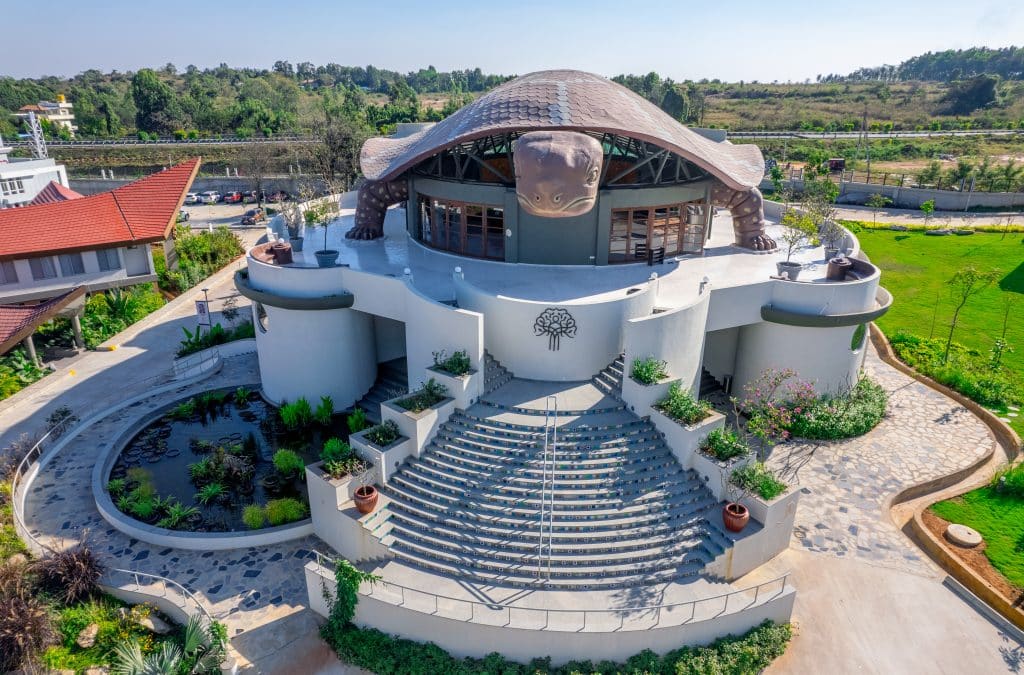
Sprawling Tranquility
Designed by Ayush Kasliwal of AKDA from Jaipur, Kshemavana is a pleasant 60 km drive from the Bengaluru airport, leading to a sprawling 23-acre property immersed in soulful architecture and design. Constructed on the grounds of an old brick factory, at the heart of Kshemavana’s charm are its meticulously curated interiors, where each piece of décor is a testament to its rich history and artistic lineage. The journey begins with a majestic Kinnala Peacock, crafted by Chitragara from Kopal District, setting the tone for the sanctuary’s cultural tapestry. The first thing that strikes you is the large building with a tortoise-shaped roof. As you soak in the grandeur and calm of the space, you realize that the ambience instantly puts your body at ease. Natural textures, traditional materials, and thoughtful artworks draw your attention, but it is the overall calm that strikes you the most.
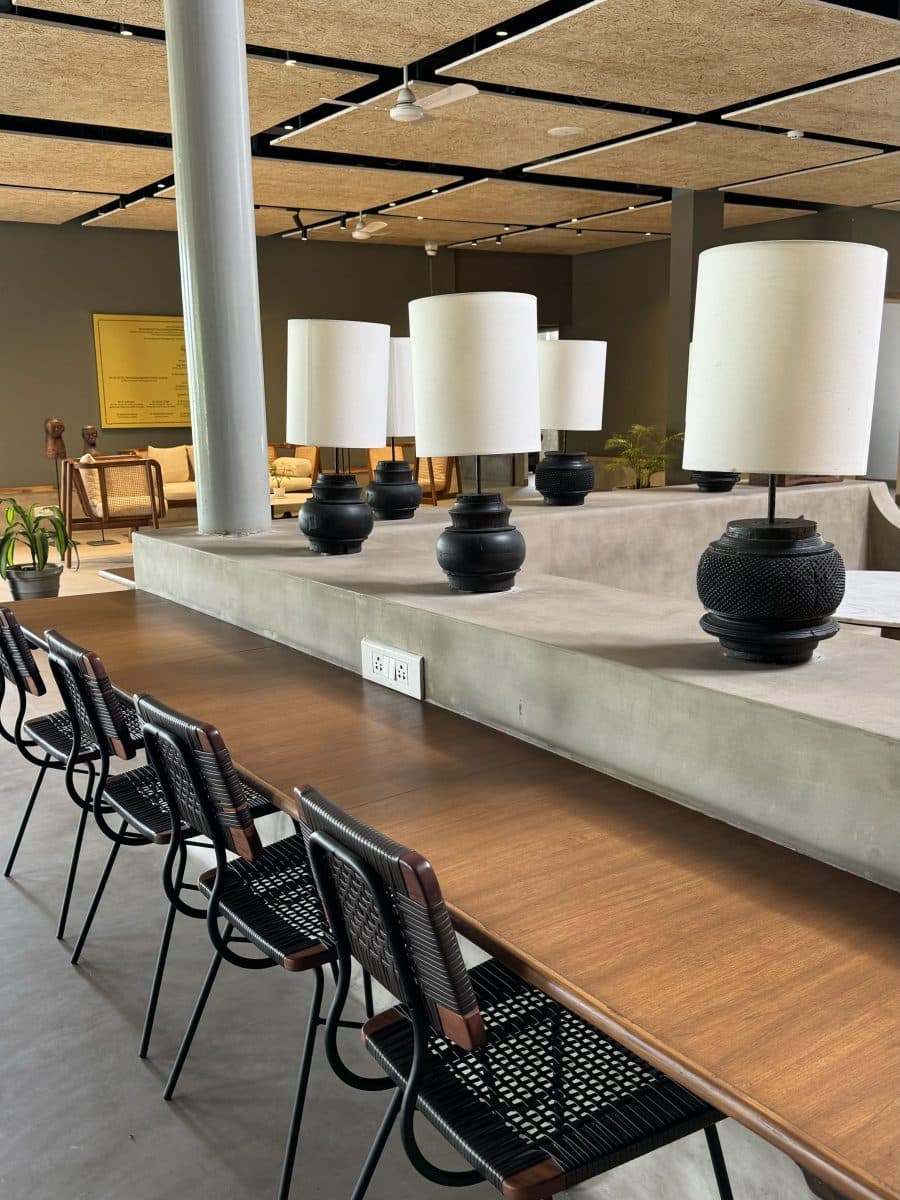
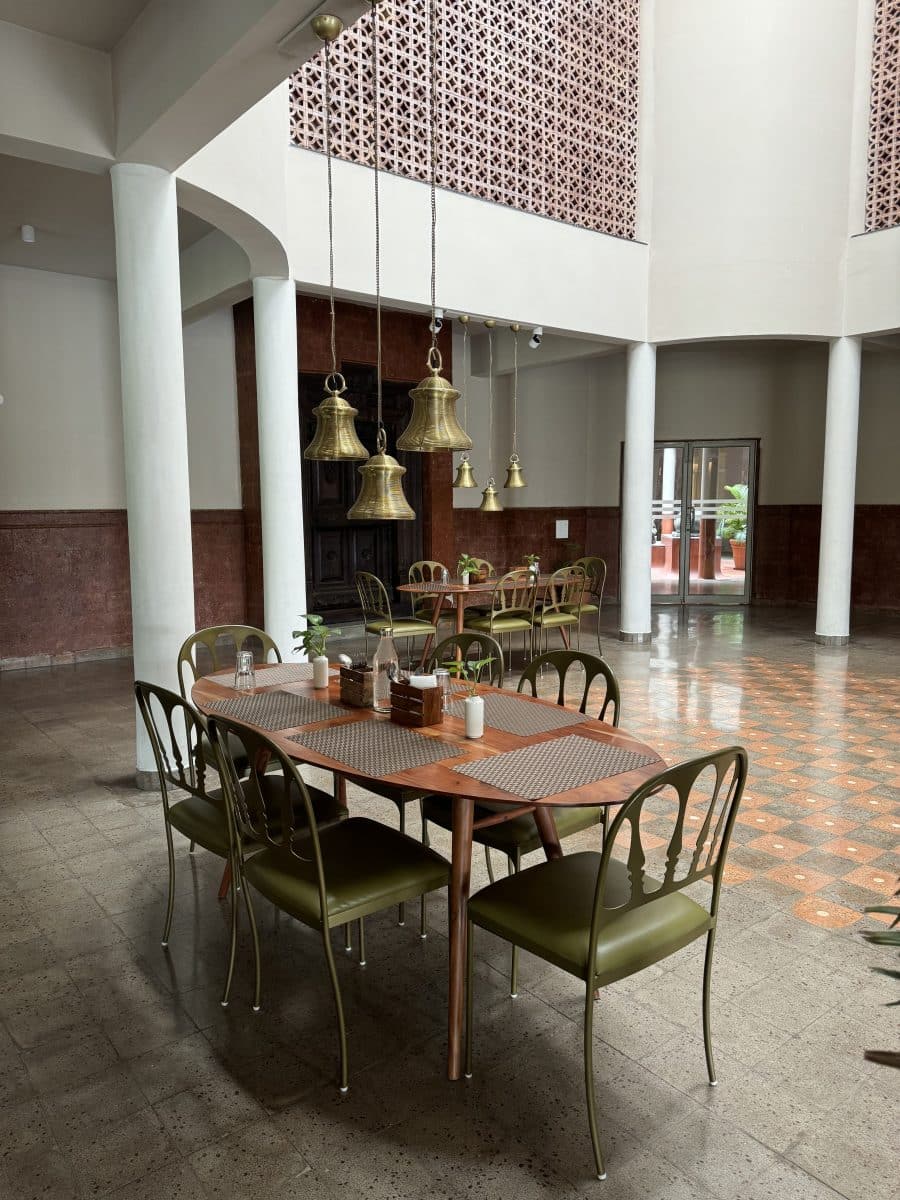
Immersed in Traditions
As you enter, a large reception desk with a traditional roof and wood panels handmade by Harish Achar from Karkala welcomes you. The reception area, called Garuda, is inspired by the mighty bird associated with Lord Vishnu, the God of preservation and protection. Garuda is considered special to worship and is regarded as a divine entity. The design of the Kshemavana Garuda brings out this feeling of preservation and decor through its many décor elements, from wood panels that depict the Ramayana to old teak wood doors repurposed as mirror frames. There is also a table made from a single tree trunk sourced from Dharmasthala, parts of wooden pillars procured from old South Indian temples repurposed as lamps, a vintage woodwork piece from a temple chariot, Chettinad wooden frames reclaimed from old mansions and repurposed as beautiful interior décor, antique door frames repurposed as wall mirrors, and hanging lamps repurposed from vintage bodhigey.
A Soulful Experience
Negative impressions of ‘Prabhavali’ motifs from idols from the Manjusha Museum on terracotta tiles are another highlight. Handmade textures throughout add to the ambience with in-situ concrete finishes contributing to the raw and natural language of the space. “When we met Ayush, he suggested that we repurpose the antiques we already had in store to design the interiors. I have to admit it was one of the best decisions because that has brought soul to the space, and somewhere I believe the calmness and vibe of the temples come to add to the ambience of Kshemavana.”
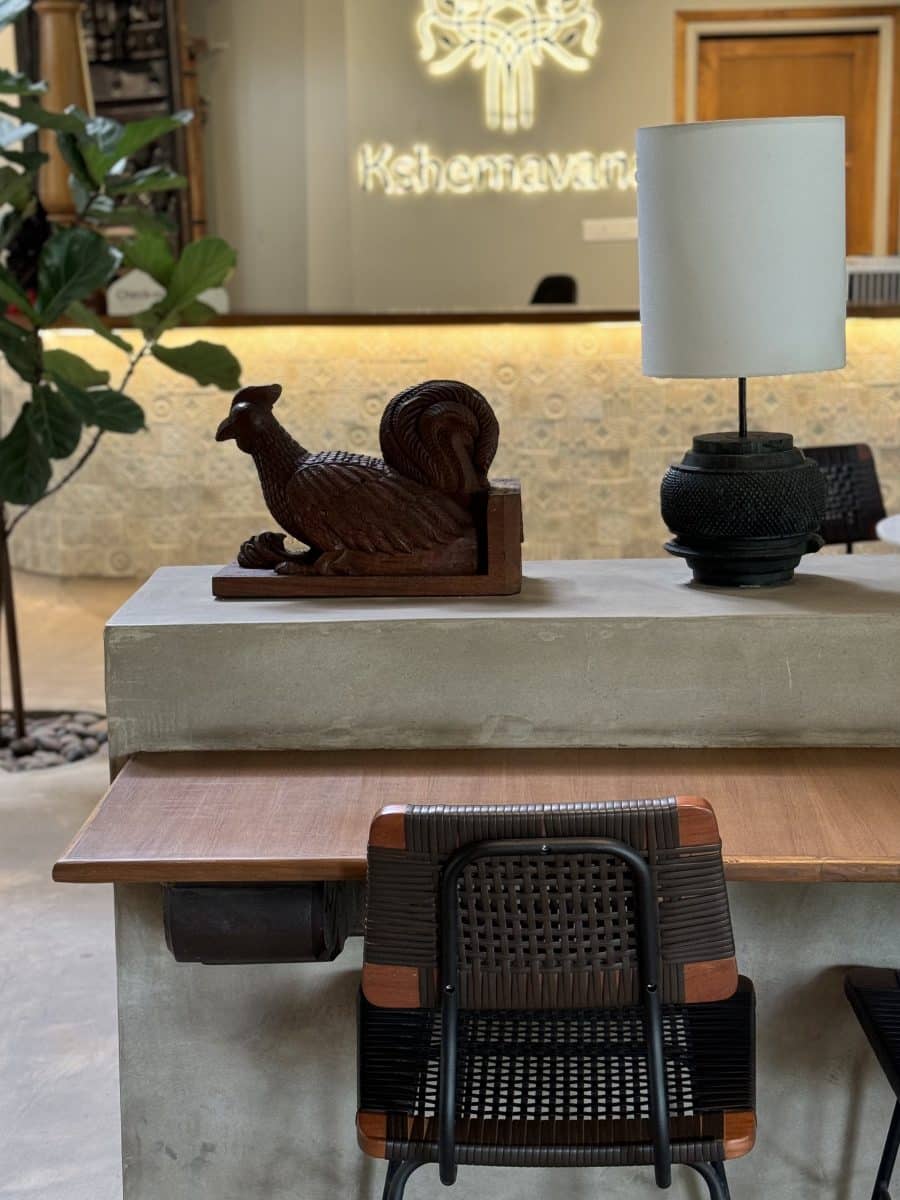
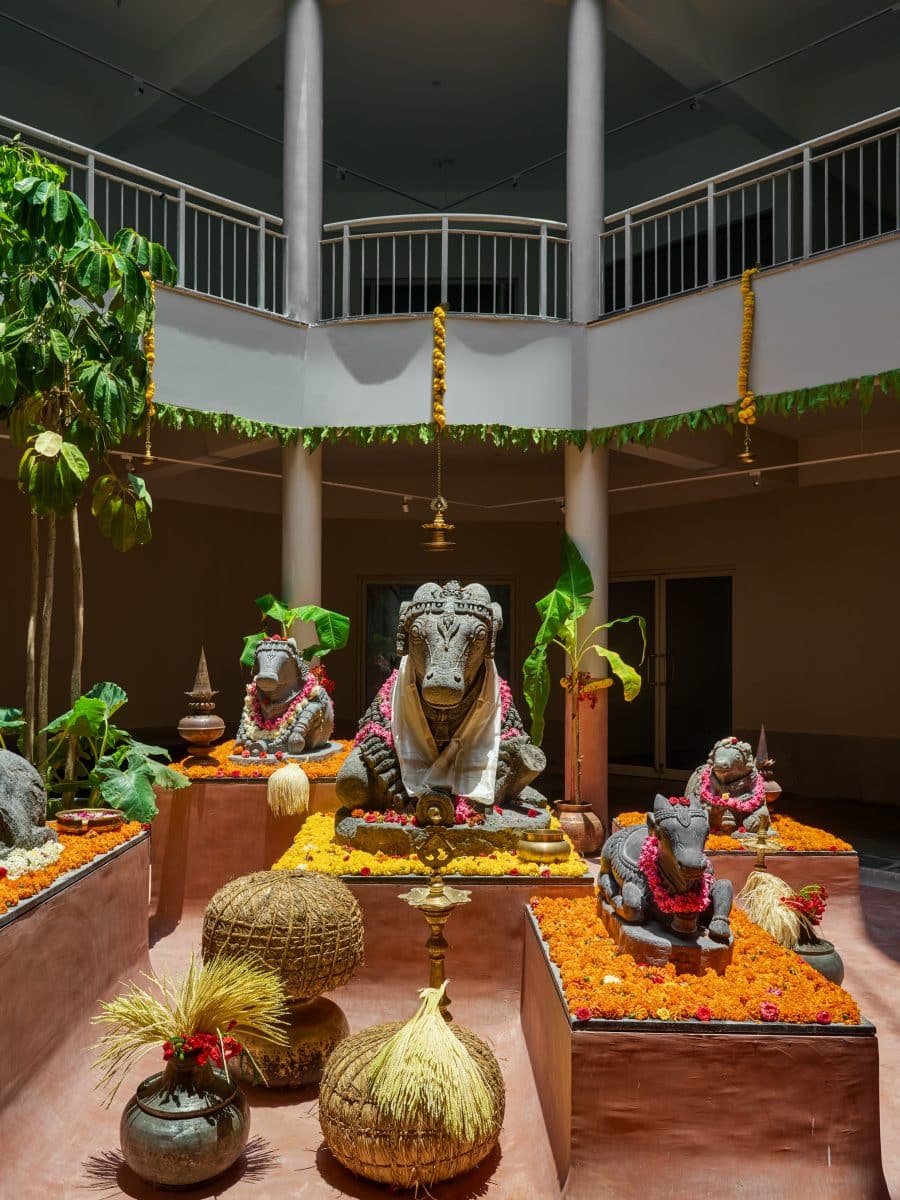
Another highlight is the coloured glass crafted into stained glass windows in which small pieces of glass are arranged to form patterns or pictures, held together (traditionally) by strips of lead and supported by a rigid frame. These are created by Glasscrafters, Bengaluru. Every corner of Garuda narrates tales from scriptures or focuses on tradition, evoking a sense of divine presence. Terracotta tiles, commissioned from Harikrishna Potters near Dharmasthala, showcase negative impressions of ‘Prabhavali’ motifs, adding rustic charm to the flooring. Throughout Kshemavana, handmade textures grace the walls, created with charcoal and adorned with blocks of Ponki mara wood. Techniques like Kitta, using tamarind seed paste and natural powders, ensure every detail is meticulously crafted, often finished with vibrant enamels or subtle golden hues.
Artistic Dialogues
Commissioned artworks celebrate native Bengaluru birds in hand-painted glory, while the lobby’s collection features Thanjavur and Mysore paintings alongside the vibrant Saura art of Orissa. Art in the Garuda includes original works of Pattachitra and Kalamkari, with Thanjavur and Mysore Paintings displayed. A rare art called Saura art, practised by the Sauras—primitive tribes of Orissa—is one of the most dynamic and colourful. The art of the Sauras draws inspiration from their belief that the world is peopled by a great company of Gods, as well as spirits of nature and their ancestors. It is a means of worship and invocation by the priest or shamans. After washing the wall with fresh red earth and water to provide a good background, the painter uses a twig as a brush and pigments made from rice, ash, chalk, or lime. The general format of the work is the form of a house in a rectangular or square space. It is only in the isolated village of the Langia Sauras of the hills that one finds the Ittalams (paintings) in their true sacred and spiritual context.
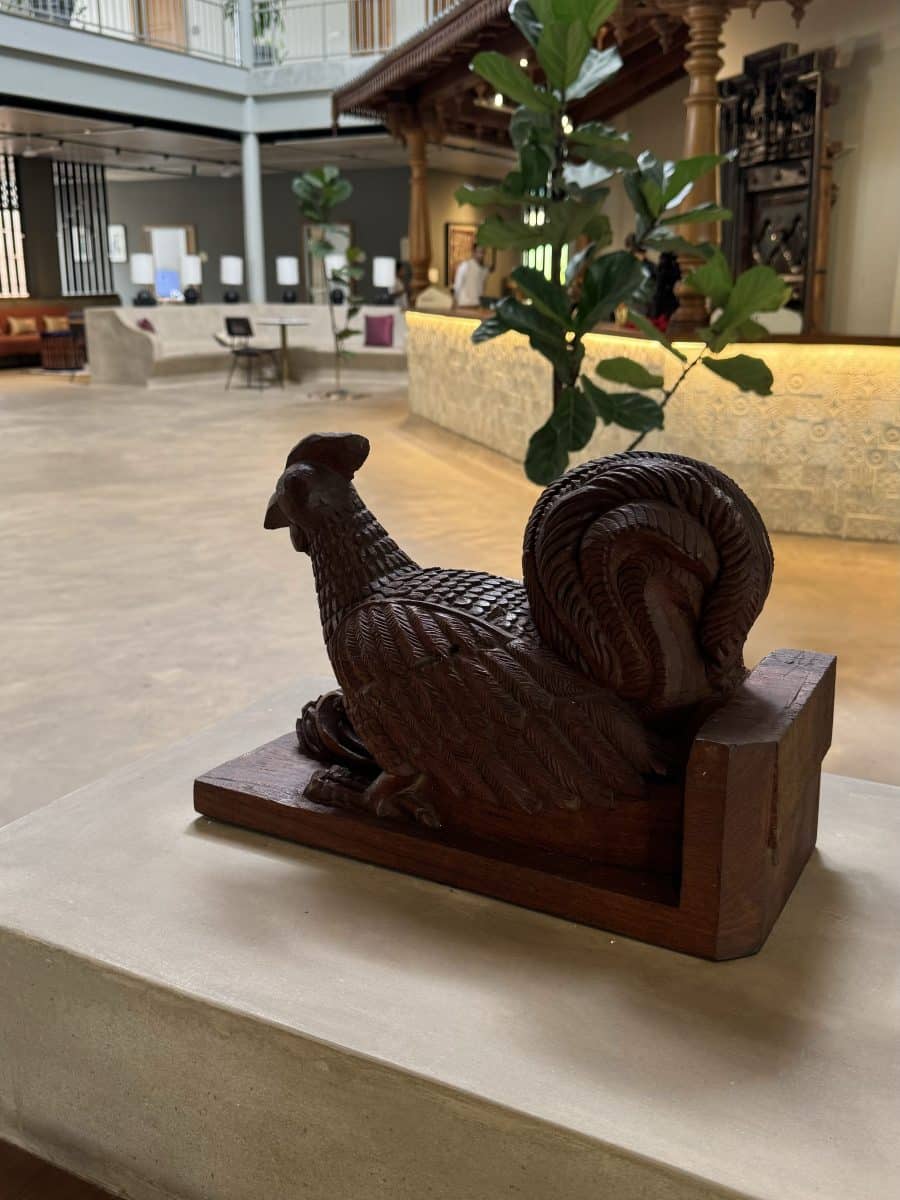
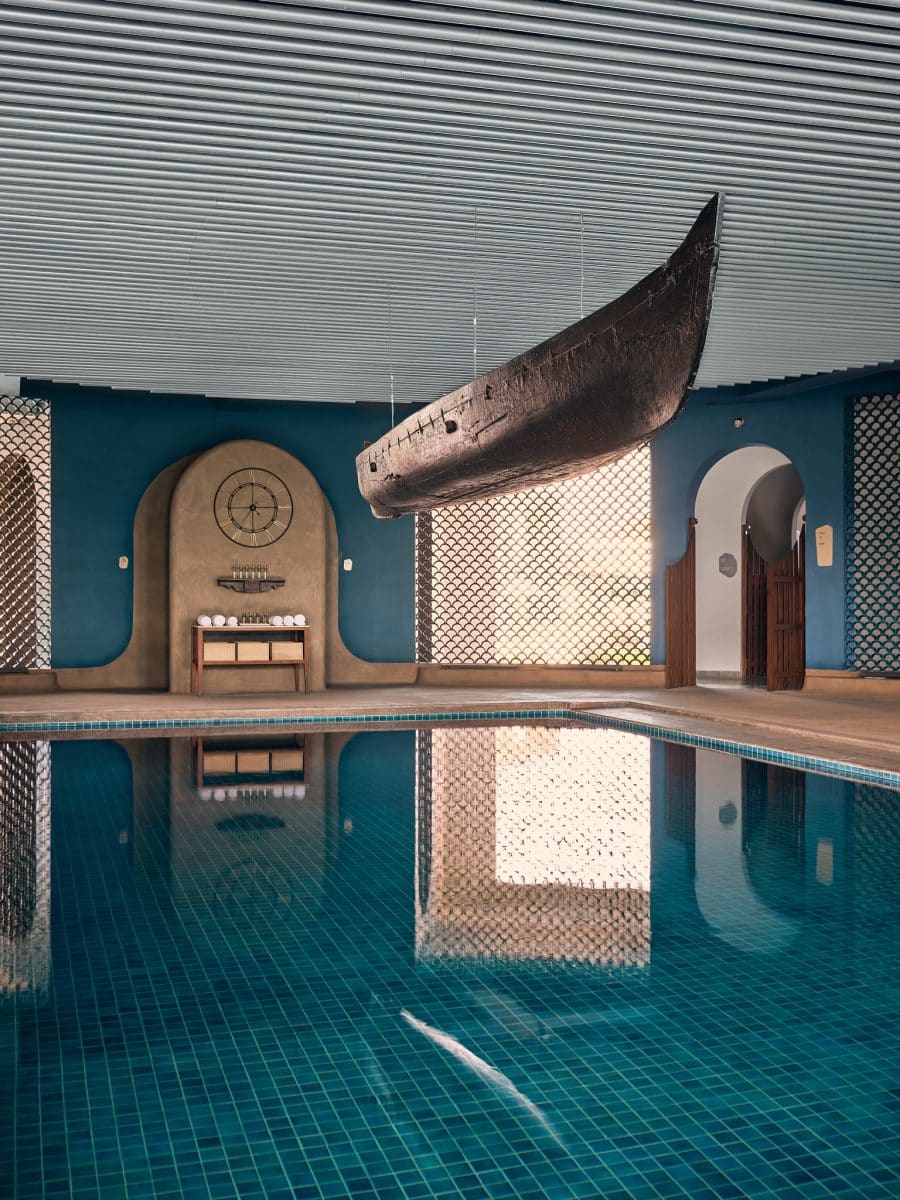
Architectural Marvels
Kurma, the central building with its distinctive turtle roof, houses the yoga halls and swimming pool—a tribute to longevity and wellness. Moroccan tiles in the stairwells, handmade in Noida, offer a visual journey through craftsmanship from distant lands. The dining areas, themed according to the food they serve, are designed using a simple, contextual aesthetic with natural materials and traditional design. While one zone uses traditional bells and woodwork, another incorporates raw design elements to complement the food theme. The juice zone has a lighter, café-like feel with interesting seating arrangements. The main yoga hall features a stunning mural inspired by traditional Kerala murals. Artist Jiju Lala from Kerala took 41-60 days to complete this mural, where the outlines are done in yellow and later filled with colours. Traditionally, the image that an artist intends to draw is first versified and uttered by the artist. Then, the artist invokes many muses in verse and starts drawing. The prayer verses detail the hand gestures, the mount, and the weapons of the deities portrayed. Vallom (boat in Malayalam) making is an integral part of the culture of the state and finds itself in the swimming pool area, where several aqua activities are conducted. The region of Ernakulam is known for its boat-making expert craftsmen. The kombu and the thalamaram, the two mastheads, are made separately and attached to the main body of the boat. The outside of the structure is rubbed with a paste containing charcoal powder, arpus or chanchalyam, lime powder, and fish oil.
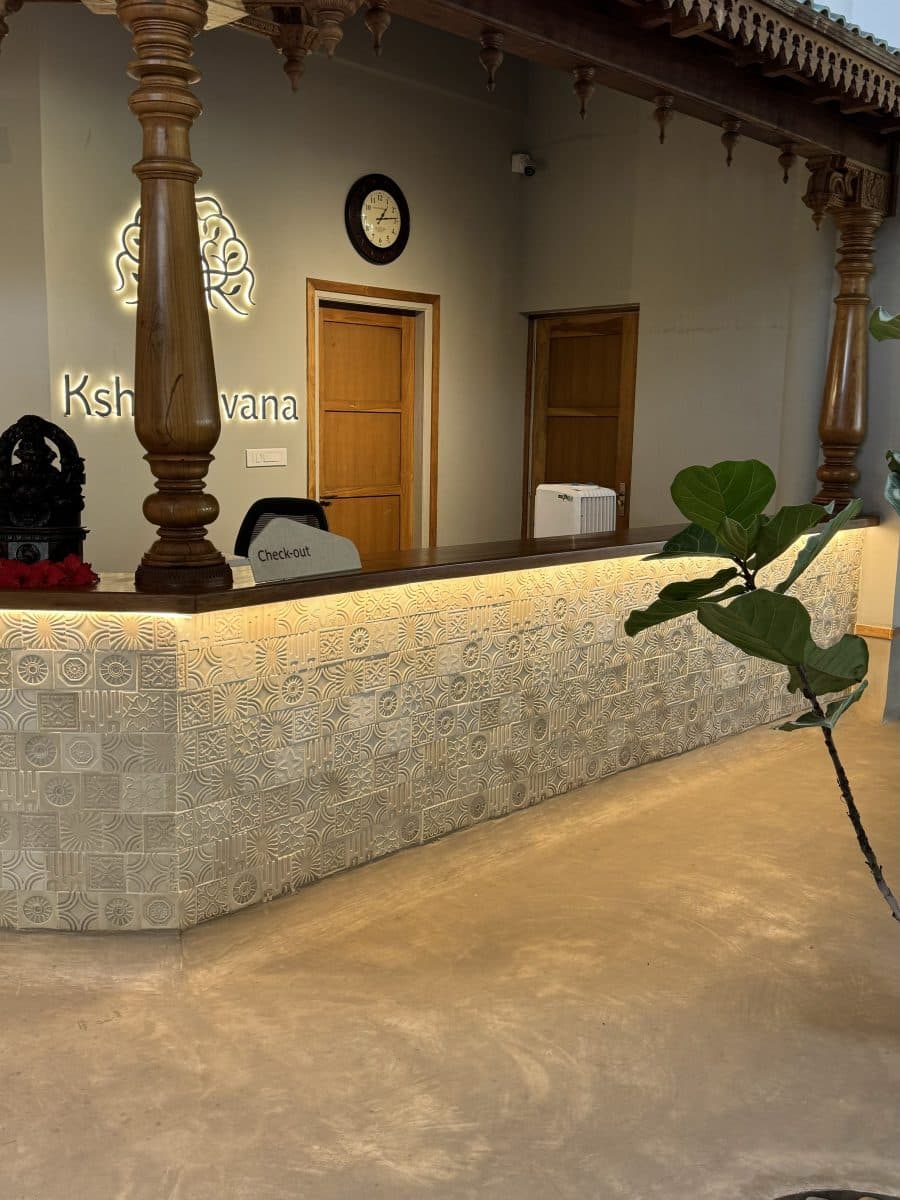
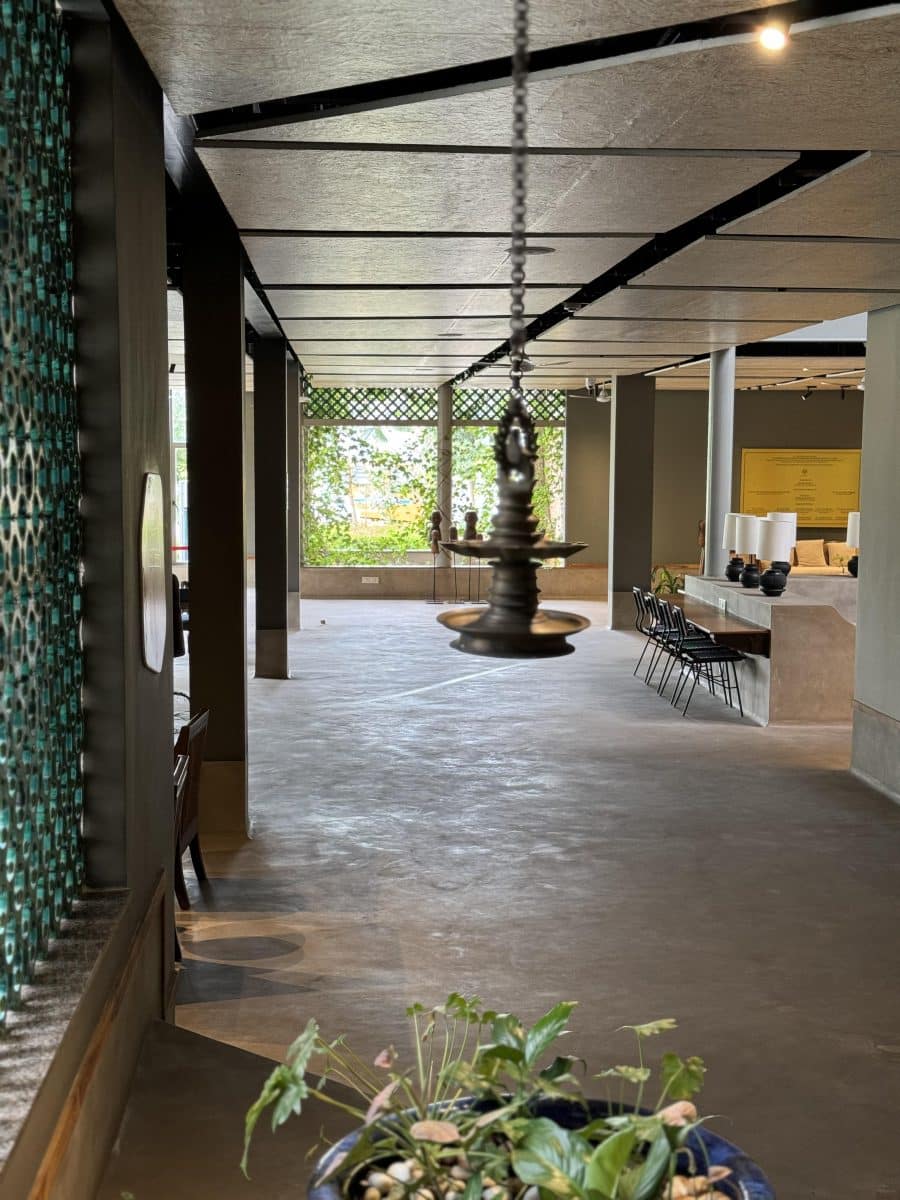
Engaging Spaces
The recreation room captivates with Gond art murals, showcasing the vibrant storytelling tradition of India’s tribal communities. Handmade tiles and Chettinad woodwork further enrich dining and residential areas, while installations of Nandi sculptures exude tranquility in the heart of the recreation block. The residential spaces are designed with central courtyards, offering a relaxed ambience. The suites—Pushpa and Vana—are a dream come true for wellness seekers. Besides being spacious and tastefully designed using the same traditional-meets-modern philosophy, the rooms have private treatment rooms, with the top-category rooms offering private hydrotherapy, steam, sauna, and a hydraulic massage bed.
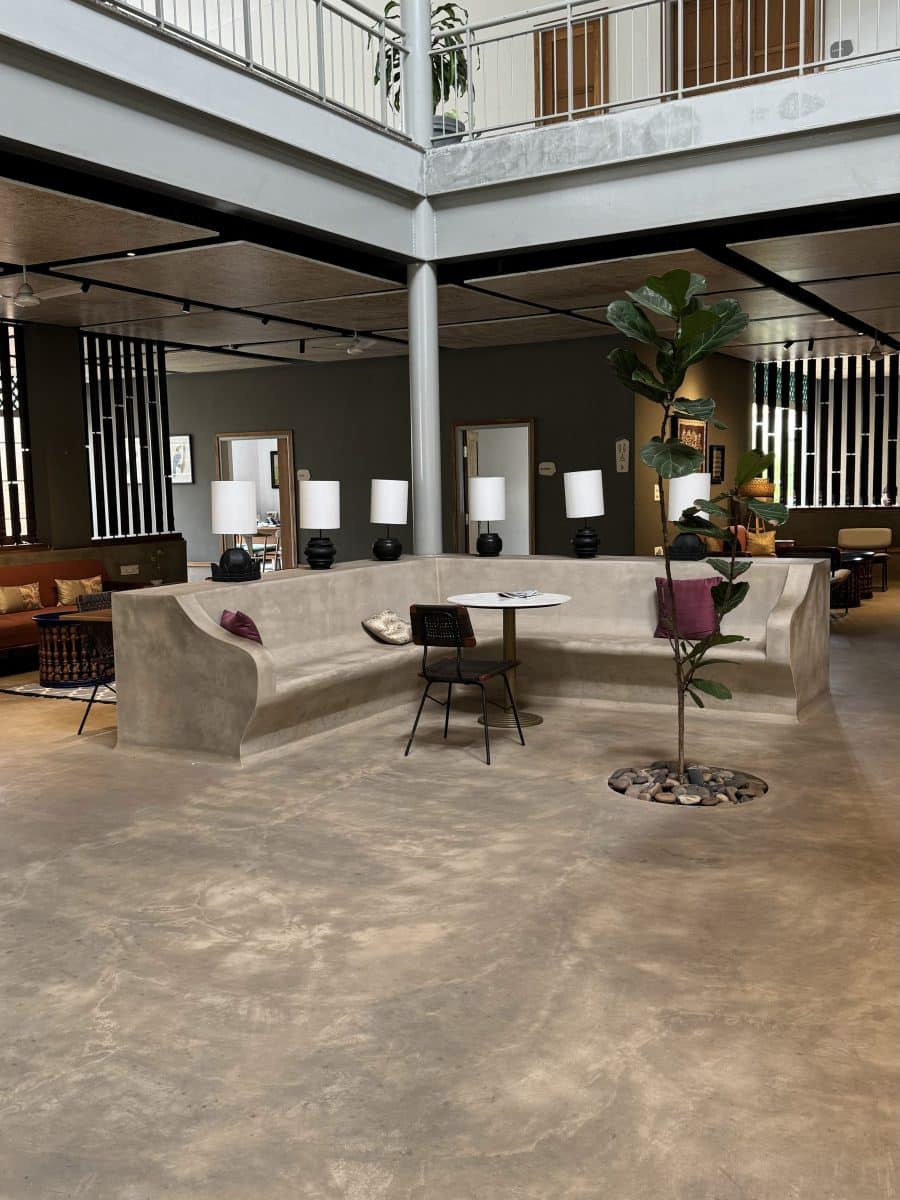
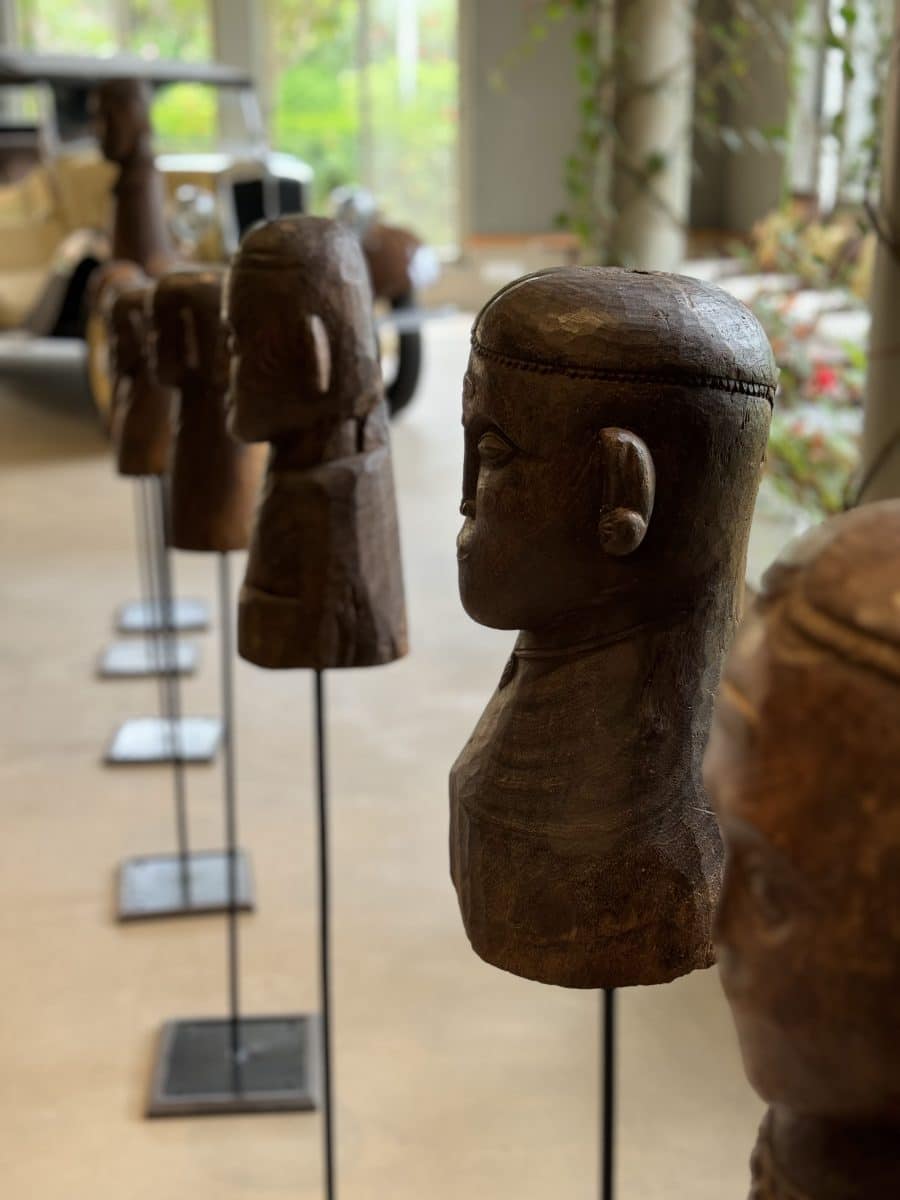
Preservation and Purpose
At its core, Kshemavana embodies a philosophy of preservation and purpose. Each element, from its recycled wooden frames to meticulously crafted artworks, not only enhances the aesthetic but also preserves cultural heritage for future generations to cherish. In every nook and cranny, Kshemavana invites exploration—a sanctuary where design and décor transcend aesthetics to evoke a deeper connection with history, artistry, and the essence of mindful living. As visitors immerse themselves in its tranquil ambience and artistic splendour, they find not just a retreat but a journey through time and culture, celebrating the beauty of tradition in a modern context.

